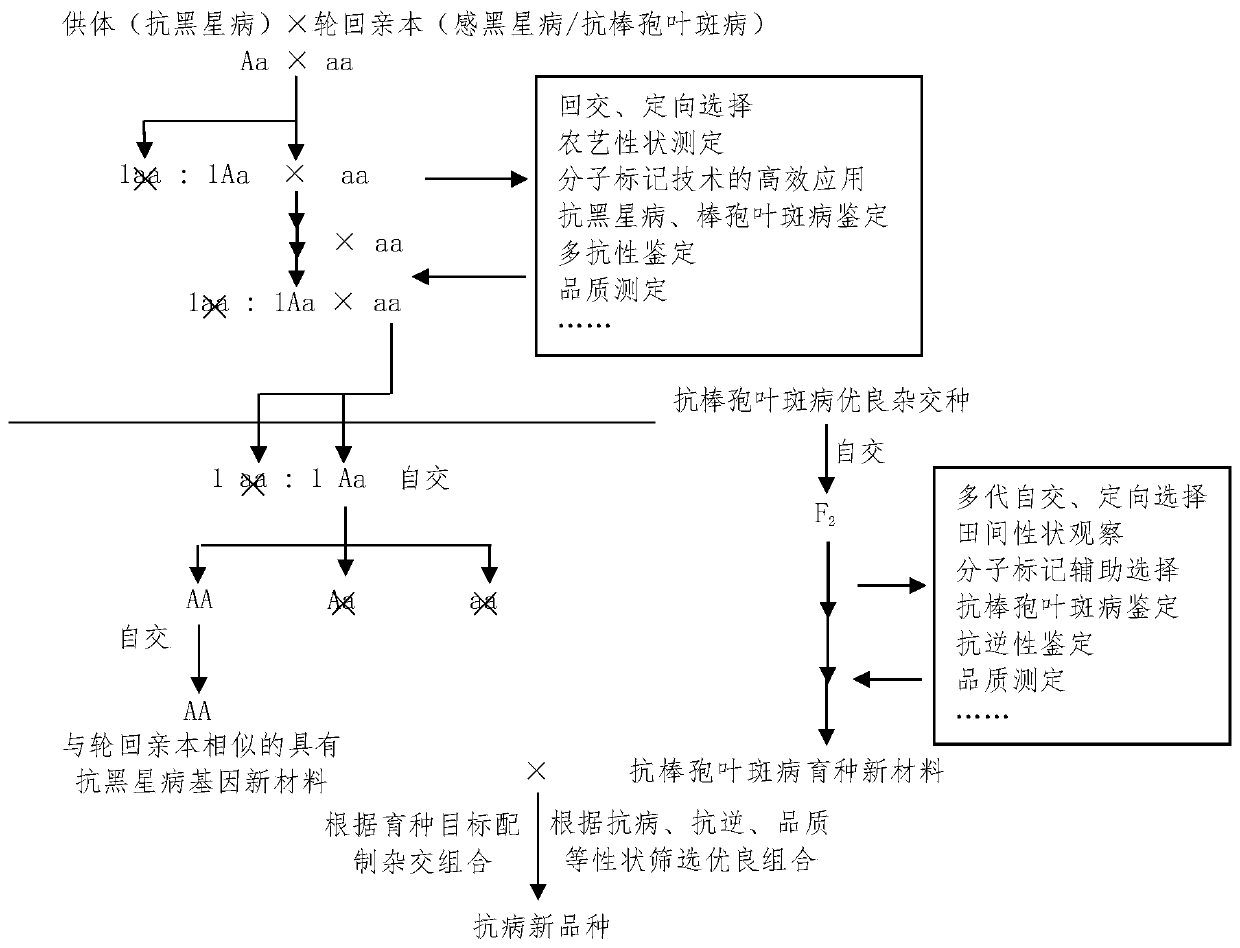Selective breeding method of cladosporium cucumerinum and corynespora cassiicola resistant sicyos cucumber hybrids
A technology for corynesporum leaf spot and scab, which is applied in the field of breeding of cucumber hybrids resistant to scab and corynebacterium leaf spot, and can solve the problem that heterozygous disease-resistant plants and homozygous plants cannot be distinguished. Disease-resistant plants, inaccurate selection, long breeding time, etc., to achieve the effects of excellent comprehensive field performance, avoiding environmental pollution, and high accuracy
- Summary
- Abstract
- Description
- Claims
- Application Information
AI Technical Summary
Problems solved by technology
Method used
Image
Examples
Embodiment 1
[0034] A method for breeding dense thorn cucumber hybrids resistant to scab and coryneform leaf spot (see figure 1 ), including the following steps:
[0035] ⑴ Use the dense-spine-resistant coryneform leaf spot cucumber excellent line as the female parent (the female parent is the high-quality variety Jinlu 21-10 through continuous selfing and single plant pedigree Corynespora leaf spot disease cucumber excellent line), with scab resistant cucumber variety Jinchun No. 1 as the male parent, crossed to obtain the first generation;
[0036] (2) The genotypes of the first transgenic generation are heterozygous for scab resistance and homozygous for scab susceptible. The transgenic plants of the first generation are screened by molecular markers, and the scab-resistant heterozygous plants are screened, and the field agronomic traits are selected and identified A single plant with excellent comprehensive traits was obtained, and an excellent line of dense-spur-resistant cucumber against ...
Embodiment 2
[0046] The InDel molecular marker screening method for detecting cucumber scab resistance sites includes the following steps:
[0047] ⑴ Extract cucumber genomic DNA from the tested sample;
[0048] (2) Use the cucumber genomic DNA as a template, and use the nucleotide sequences described in SEQ ID No. 1 and SEQ ID No. 2 as the upstream and downstream primers to perform PCR amplification. (3) The nucleotide sequence obtained in step (2) The sequence was sequenced, and a 283bp / 258bp nucleotide sequence was obtained. The sequence contained an InDel site closely linked to cucumber scab susceptibility related genes or one closely linked to cucumber scab resistance related genes 的 InDel site;
[0049] If the sequencing result is shown in SEQ ID No. 3, it is a scab-susceptible plant; if the sequencing result is shown in SEQ ID No. 4 or has both the nucleotides described in SEQ ID No. 3 and SEQ ID No. 4 Sequence, for scab resistant plants. Scab resistant plants, or carriers of scab resist...
Embodiment 3
[0052] Identification of resistance to scab in cucumber varieties
[0053] The cucumber varieties Jinchun 1, Jinyou 325, Jindong 369, and Jinyou 35 preserved in the Breeding Room of Tianjin Kerun Cucumber Research Institute were selected, and the methods of Example 2 were used to perform operations: After testing, Jinchun 1 No. 325, Jinyou No. 325, and Jindong No. 369 Amplified Products have the nucleotide sequences described in SEQ ID No. 3 and SEQ ID No. 4, and are heterozygous scab resistant varieties; Jinyou No. 35 amplified products The nucleotide sequence described in SEQ ID No. 3 appeared, and it was a variety susceptible to scab (Table 1).
PUM
 Login to View More
Login to View More Abstract
Description
Claims
Application Information
 Login to View More
Login to View More - R&D
- Intellectual Property
- Life Sciences
- Materials
- Tech Scout
- Unparalleled Data Quality
- Higher Quality Content
- 60% Fewer Hallucinations
Browse by: Latest US Patents, China's latest patents, Technical Efficacy Thesaurus, Application Domain, Technology Topic, Popular Technical Reports.
© 2025 PatSnap. All rights reserved.Legal|Privacy policy|Modern Slavery Act Transparency Statement|Sitemap|About US| Contact US: help@patsnap.com

